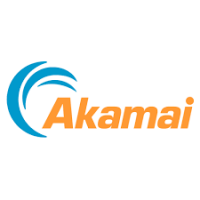
Akamai
View Brand PublisherExperts weigh in on picking the right cloud to maximise ROI to achieve digital transformation goals
At a panel discussion during TechSparks 2023 Mumbai edition, enterprise leaders sat down to discuss how they plan to strategically maximise the Return on Investment (ROI) by picking the right cloud for their workload.
Cost — and the desire to reduce it — is a large factor in all cloud operations. To have a clearly defined strategy and maximise outcomes, enterprises must prioritise investing in the right cloud with the most direct impact on company revenue.
At a panel discussion during TechSparks 2023 Mumbai edition, enterprise leaders discussed how they plan to strategically maximise the Return on Investment (ROI) by picking the right cloud for their workload to achieve their digital transformation goals.
Speaking about how multi-cloud has helped reduce infrastructure costs, Yogesh Nehra, President - Technology, , said, “UpGrad initially used a single cloud solution and we worked extensively with one of our partners, AWS, for all our cloud infrastructure needs.”
He added that different use cases meant the company was unable to move data for some businesses, given limitations such as compliance issues and geographical constraints.
“Some clients required specific cloud solutions to be deployed on our landing platform. Therefore, we considered going multi-cloud. It has helped reduce our infrastructure costs by 50-60% and has helped expand our business.”
Ranjeet Walunj, SVP-Engineering, , shared that the digital native company is yet to take the multi-cloud route. Agreeing with Nehra on the compliance and geographical issues that limit the usage of a preferred cloud partner, Walunj said considering a cloud-agnostic solution would require a lot of architectural changes.
“But so far, honestly, we are completely single cloud on AWS, and are present in regions served by AWS,” he said.
Benefits of leveraging multi-cloud
Kapil Kapoor, CTO, , discussed the importance of using multiple cloud service providers for operational, business, and technology agility.
He said the benefits include cost savings, revenue generation, product differentiation, talent acquisition, disaster recovery, resiliency, and strategic partnerships, adding that multi-cloud helps meet data residency requirements.
CredAble uses cloud-native technologies such as serverless computing and containers to drive down costs and leverage tooling in their operations. The multi-cloud experience also brings diversity in architectural thinking and infrastructure.
“We are a fast-growing company and we want to make sure that there is tech portability when we go for mergers and acquisitions to future-proof the business,” he said.
Sumant Narayanan, Business Head – India, , brought forth the complexity of security on the cloud and the need to prioritise budgets for protecting against attacks, particularly data theft and ransomware.
Narayanan advised working with vendors who have experience defending against multiple types of attacks, as opposed to buying multiple solutions that may not work together. He also emphasised the evolving nature of threats and the need for ongoing attention to security.
“Security is not a one-time plug-and-play solution. Threats are constantly evolving. So, work with vendors who have the expertise to defend a lot of these attacks,” he said.
Modularise, automate, and monitor
Nicky Sidhwani, CTO, , highlighted the challenges in automation and configuration, noting that many users do not prefer automation. He vouched for a modularised and automated approach to avoid problems that could arise from manual configuration.
Sidhwani focused on the build-versus-buy debate and recommended evaluating various providers for better solutions and security. He emphasised the importance of automation and monitoring in cost reduction, and adopting a multi-cloud approach.
According to him, following a "modularise, automate, and monitor" cycle will help to continuously improve the system.
Seconding Sidhwani’s thoughts, Clevertap’s Nehra stated that the company follows the automation mantra. He highlighted the importance of automation and efficiency in managing infrastructure, stating that any task that can be done by a machine should be automated. The company manages a large number of instances and has specific requirements from customers regarding deployment schedules. To handle this, the team relies on proper configuration, automation, and monitoring systems within Clevertap.
Major trends in multi-cloud
Summing up the discussion, Akamai’s Narayanan talked about the three major trends in the multi-cloud space. The first trend is choosing the right cloud for the right workload, which means picking a best-in-breed solution. The second trend involves solving distribution and performance issues, especially in countries like India where there is a significant rural user base. The third is cost optimisation, a crucial driver for multi-cloud adoption.
Narayanan also touched upon the issue of vendor lock-in and the growing popularity of cloud-agnostic architectures using container technologies.
“When you opt for multi-cloud, there is a lot of inertia in the system to get your developers to get used to a new setup, and it is painful. But at the end of the day, over the long term, it becomes a lot more financially viable. But many organisations aren't taking that plunge,” he concluded.








